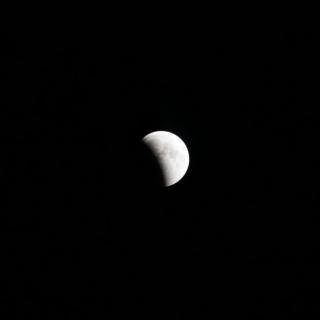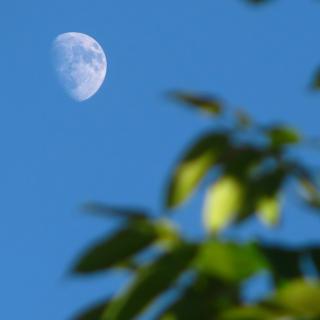

Gardening by the moon, sure! But how? And why?
Gardeners have always observed with fascination the impact of the moon on plants they were growing.
Vigor, strength, appeal: fruits, flowers and vegetables are much nicer depending on the phases of the moon.
So how can we learn to use the influence of such a faraway celestial body? What makes full moon days so special? Here are a few statements that moon gardeners have offered for thought.
>>> Moon planting calendar <<<
The phenomenon of waxing moon and waning moon is quite easy to understand and to apply to the garden. Harvest-boosting waxing moon is the span of time between new moon and full moon. It lasts about a fortnight.
In the northern hemisphere, the waxing moon looks like an upside-down letter C. During this phase, plants resist diseases much better. For the gardener, time to splurge: pruning plants, harvesting fruits and flowers will let the plant grow back more vigorously. Fruits will ripen over a longer period and flowers cut during a waxing moon will hold for much longer in a vase.
To define the waning moon, simply look at the lit portion of the celestial body. If the “C” letter is upright, in the northern hemisphere, then it’s the last moon quarter. At this exact moment, plants send their sap to the tips of branches. It’s the ideal time to fertilize the soil. Vegetables and plants tend to be a bit more tired at this time, and fruits are more tasty and have a stronger fragrance.
 Every gardener who pays attention to the moon knows that there are days on which to avoid gardening. These are called barren days. Actually, it is a time given for the soil to rest.
Every gardener who pays attention to the moon knows that there are days on which to avoid gardening. These are called barren days. Actually, it is a time given for the soil to rest.
There are 4 days every month for which the moon doesn’t have any influence, or even possibly a bad influence: these are the 4 special days when the Earth and Moon are closest or furthest apart, or when the orbit of the earth meets the orbit of the moon. Simply let your gardens rest on those days. They’re called “lunar nodes” in technical terms.
As for full moon days, don’t expect too much of them. That is the best day to plant your root crops (turnip, radish, carrot….) but that’s about it. Your harvests will also be more tasty, but don’t go expecting a miracle: your tomatoes won’t double in size!
Flower days are the days best suited for planting flowers. You can plant bulb flowers, repot new plants, etc… Thus, the month shows root days, leaf days, flower days and fruit days as days wear on.
You can check the perfect time to start your organic vegetable patch with a lunar planting calendar that will help you set up your timing to fit into the moon’s long cycle!
Example: today’s Lunar planting guidelines:
VEGETABLE PATCH: 2nd day for harvesting all root vegetable that are ready: carrot, parsnip, radish, turnip, red beet, leek, and any remaining potato / Onion…
September Moon Planting calendar
→ Gardening by the moon in September
 Around September 16-17, you can work on all kinds of root crops. These are crops for which the roots are interesting: from potato to mashua (both ready for harvest) to the various alliums that can be either picked (for those that are ready) or transplanted (for baby bulbs to settle in during winter to get an early spring harvest). For instance, shallot, onion, and garlic to name but a few.
Around September 16-17, you can work on all kinds of root crops. These are crops for which the roots are interesting: from potato to mashua (both ready for harvest) to the various alliums that can be either picked (for those that are ready) or transplanted (for baby bulbs to settle in during winter to get an early spring harvest). For instance, shallot, onion, and garlic to name but a few.
The following weekend days are “ascending” moon days. This means the moon is higher and higher on the horizon as it circles around the planet. It’s excellent for fruit and root crops for which you can harvest the fruits: ripe tomato, eggplant, zucchini…
In between, there are a few flower and leaf days. These are good also for landscaping efforts, and for planting herbs.